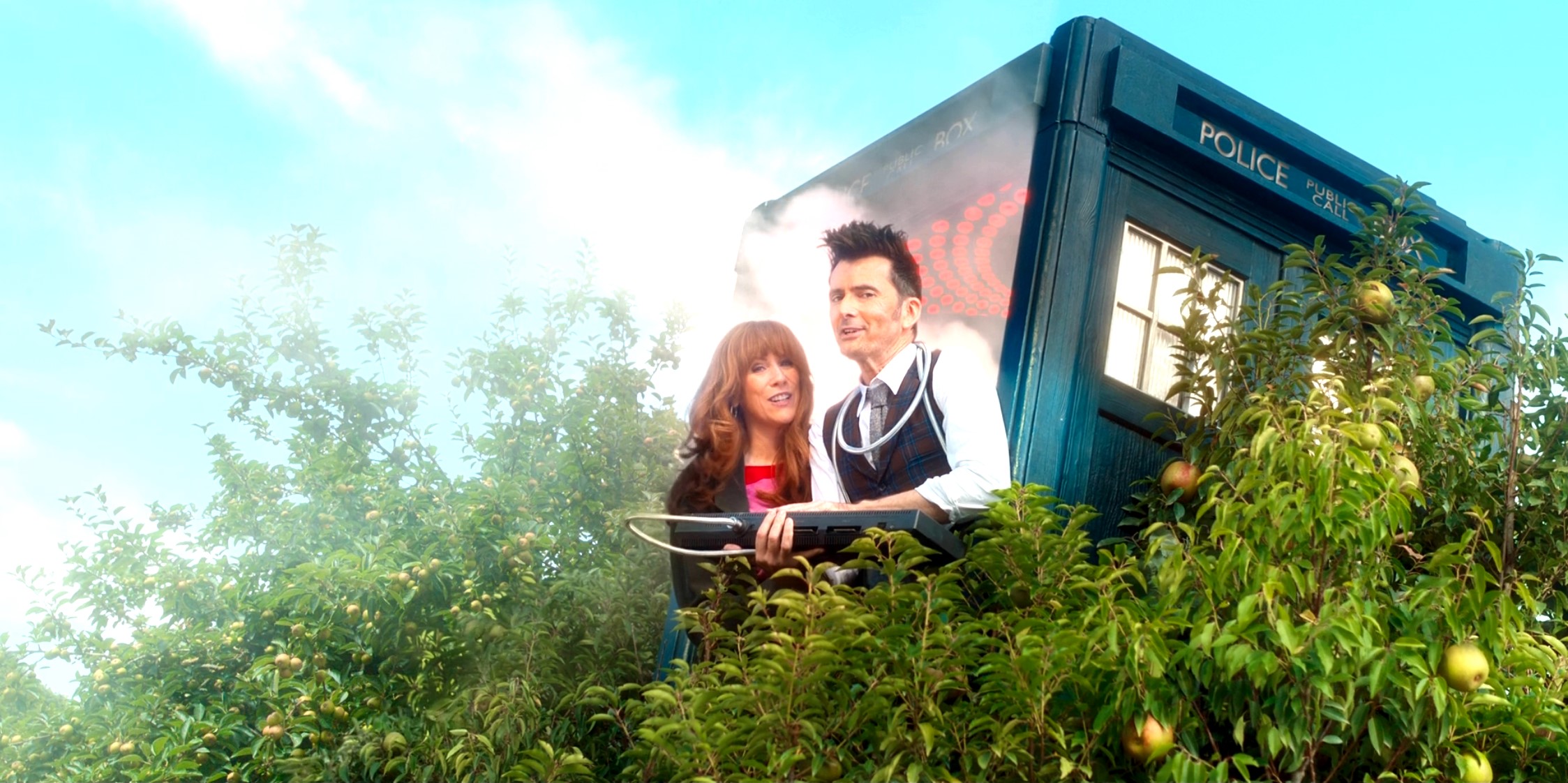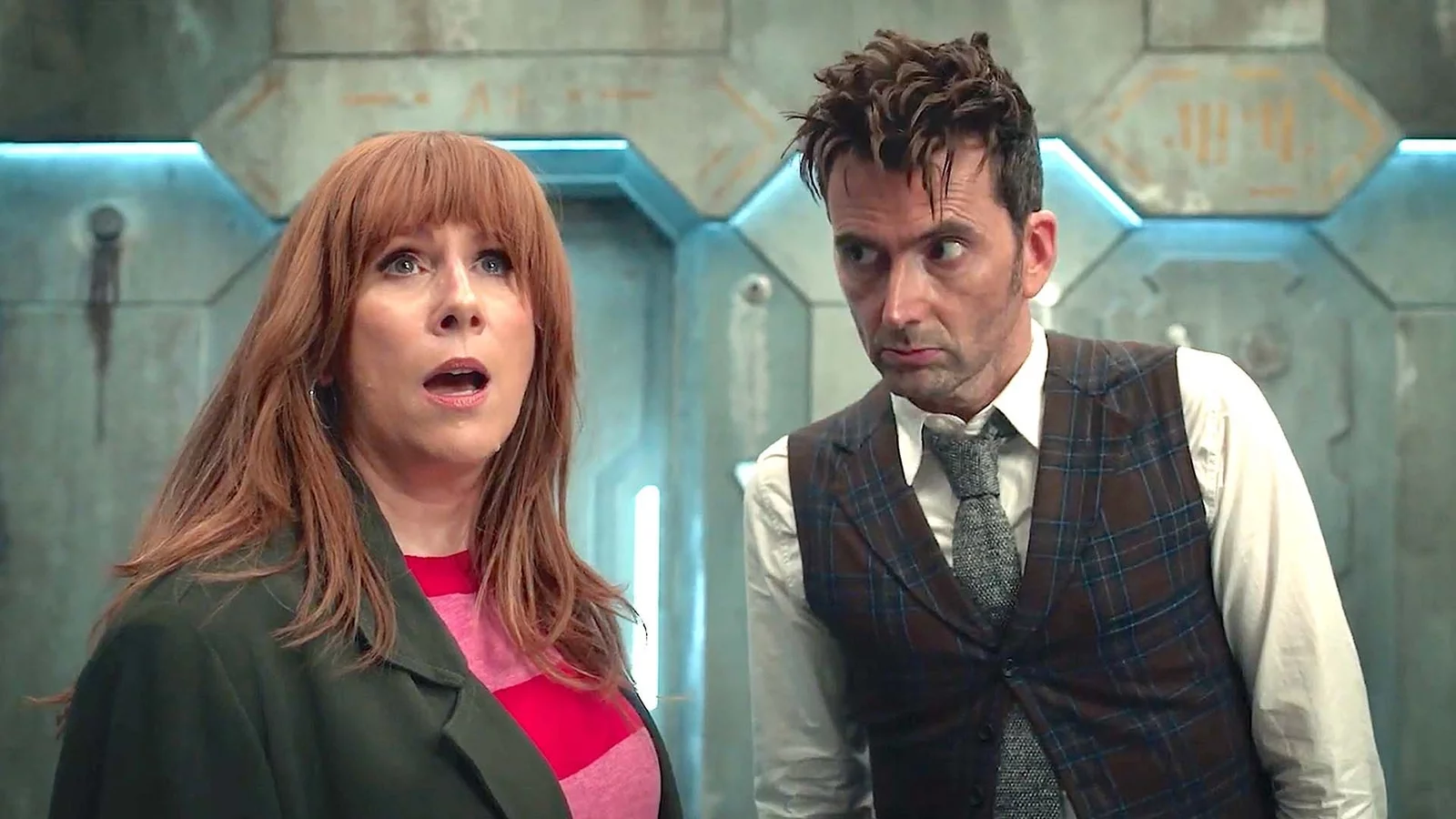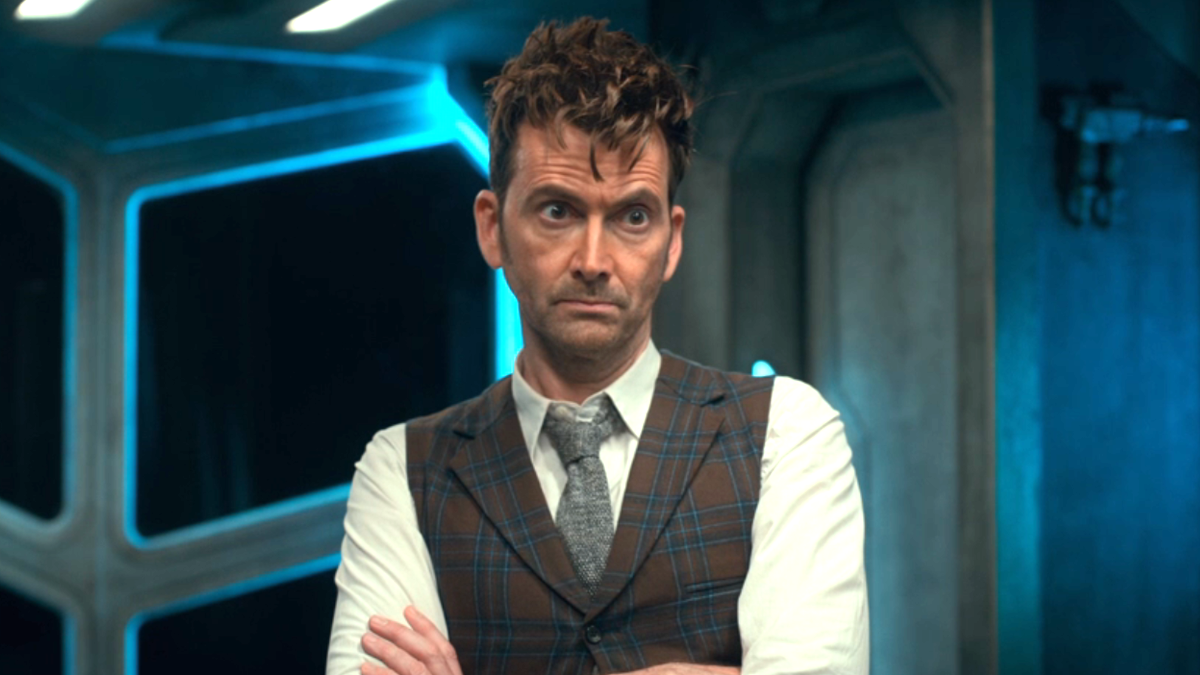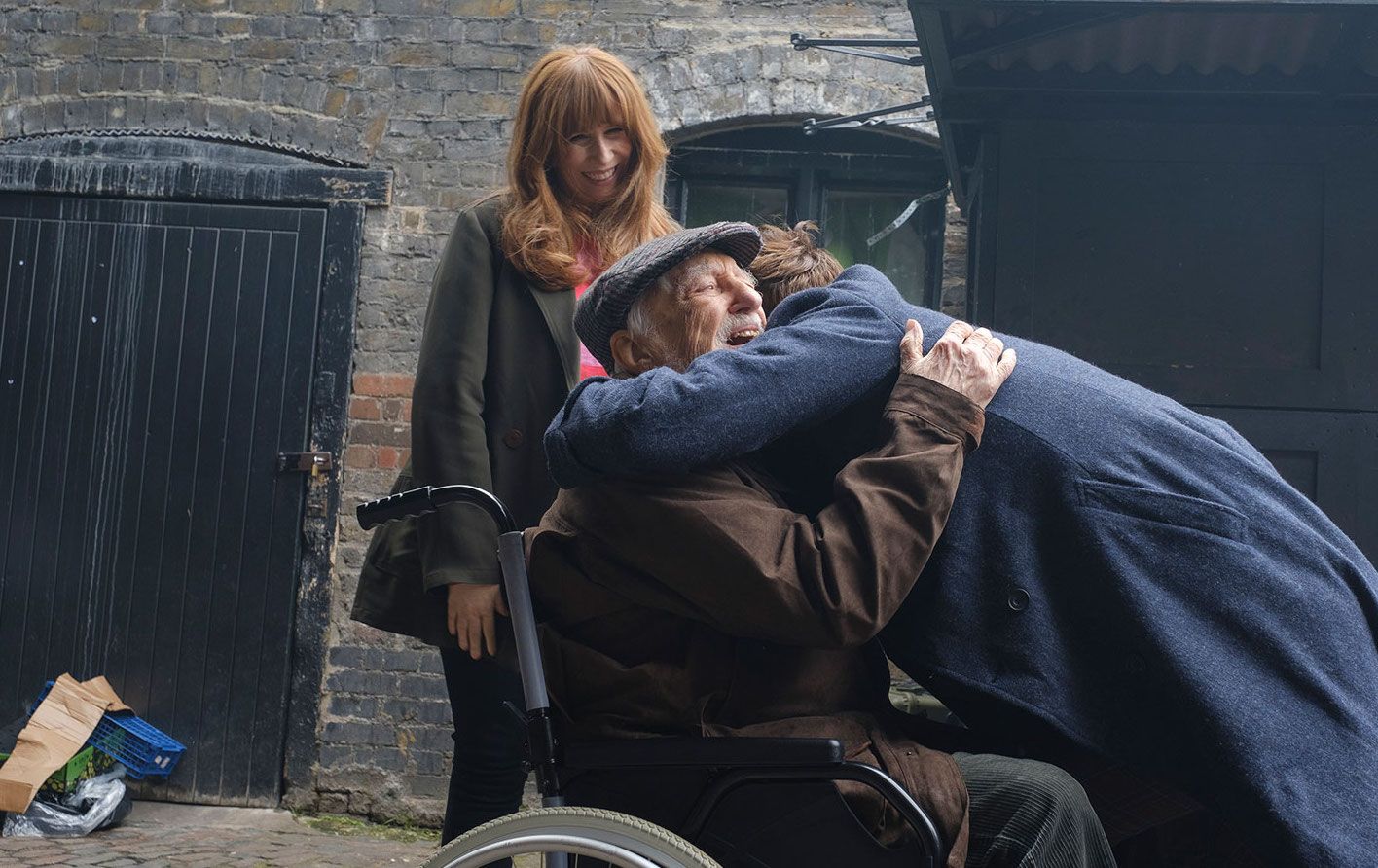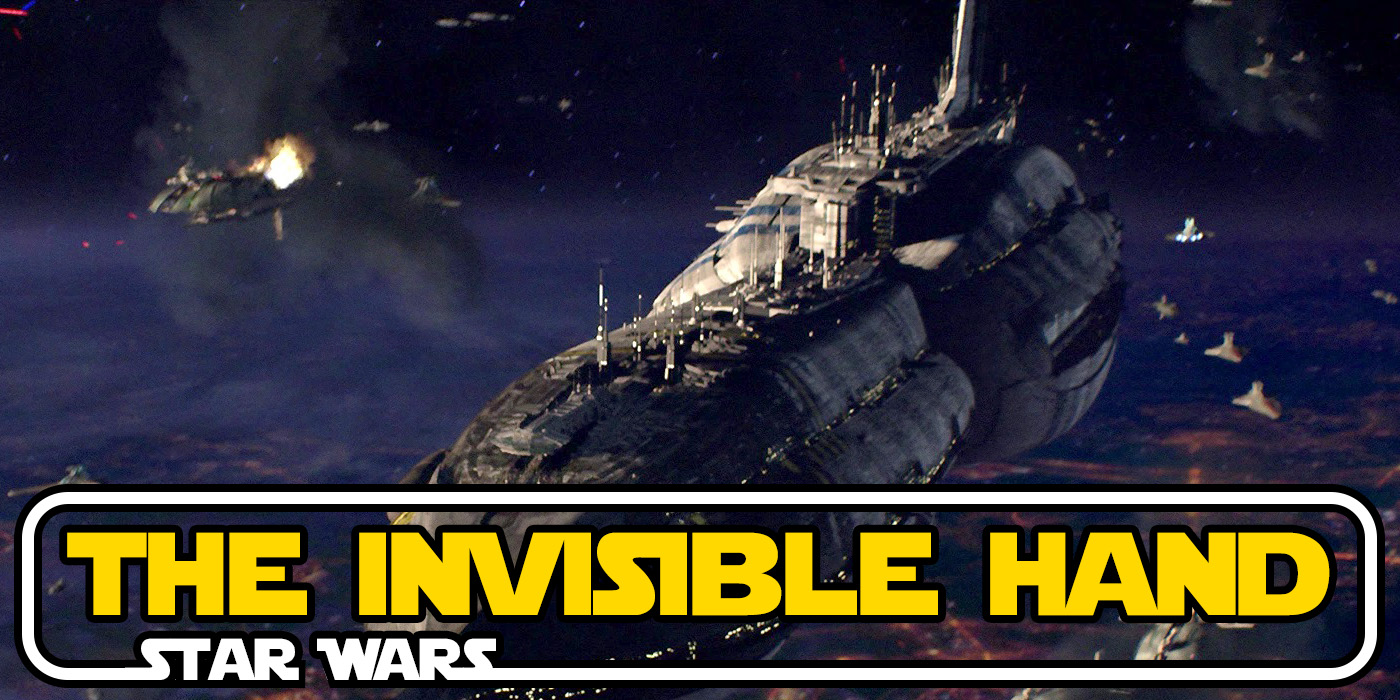‘Doctor Who’, “Wild Blue Yonder” and the Trauma of Time
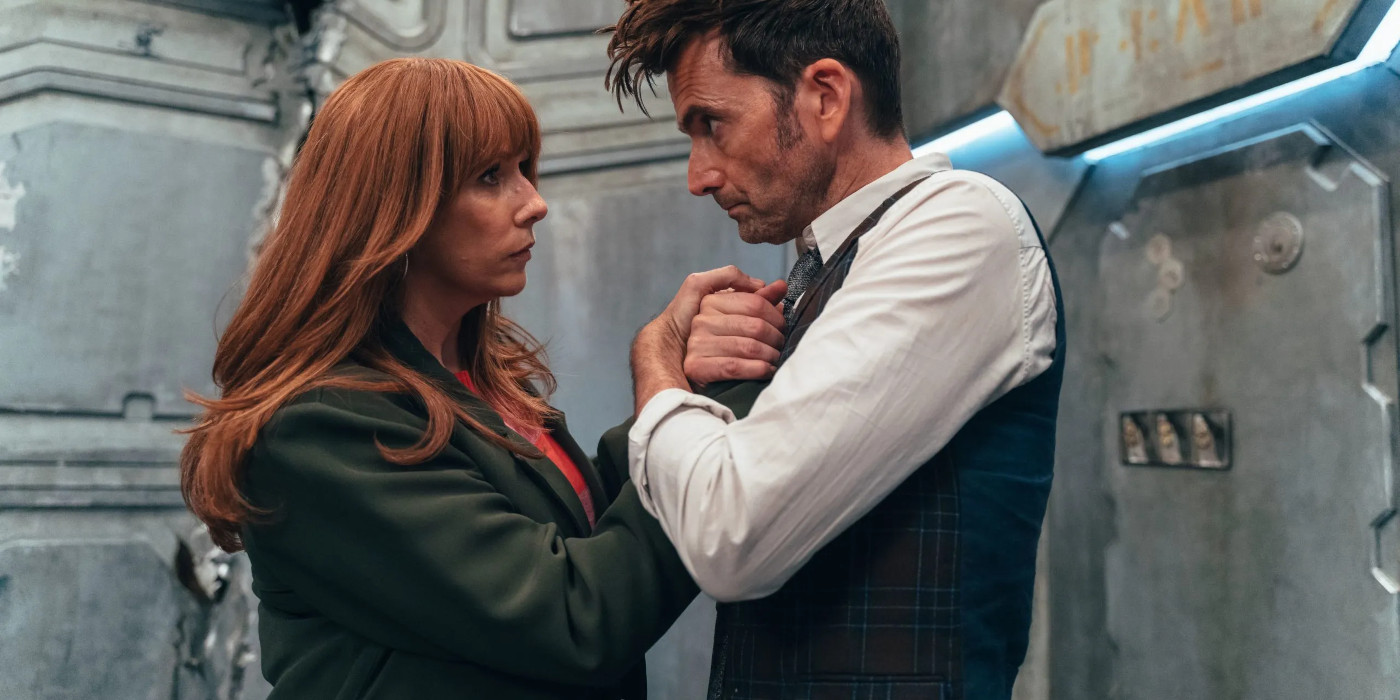
In the Doctor Who episode “Wild Blue Yonder” the Doctor and Donna must face themselves. And also aliens who look just like them.
There’s an obvious parallel to draw with the second of the three Doctor Who 60th anniversary specials, “Wild Blue Yonder”. It is, at its most basic level, a story where evil aliens quickly learn to imitate the Doctor and Donna with the goal of taking over their lives. And, of course, being evil, they mean to use those lives to destroy everything they can.
We see a much smaller version of this in the 2008 Doctor Who episode “Midnight“. However, “Midnight” exists primarily as a means to reveal the importance of the Doctor’s companion by exposing the Doctor’s primary weakness: namely that they are an immortal who needs a human companion to ground them and back them up. Without Donna in “Midnight,” the Doctor talks their way out of control of a deadly situation and nearly has their life taken over by an evil alien copying them.
But that’s not what “Wild Blue Yonder” is about. Yes, it literally has the same conceit in a much bigger-budgeted shell. However, this story is about something much more relatable: it’s about getting older, living through trauma, and feeling alienated from the rest of the world in the process. It’s seeking escape from that trauma in the past only to get retraumatized instead.
It’s a story about the Doctor, Donna, and how their relationship is not the same as it once was. How do they relate to each other now? Is their shared love still enough to help repair years of hardships?
The Double Doctor Donna
The bulk of “Wild Blue Yonder” takes place on a spaceship, starless and black, at the edge of the universe. However, before that, Donna and the Doctor briefly nip back in time to 1666 and meet Sir Isaac Newton. The sequence plays for laughs. Donna and the Doctor joke around and make a terrible gravity pun. And, in the process, they accidentally cause “gravity” to be renamed “mavity”. It’s just like old times.
Except it isn’t. Because for Donna, it’s been 15 years and for the Doctor, it’s been, technically speaking, billions more than that. The pair want a proverbial vacation from their problems. Instead, they wind up coming, quite literally, face-to-face with them.
Even before they encounter aliens who want to imitate them and take over their lives, there are already two sets of the Doctor and Donna. There’s the version of them they want to be, the people they were when they first traveled together. And there’s the people they are now: older, frailer, and sometimes harder, too, if only out of necessity.
Russell T Davies provides a perfect visual metaphor with these mysterious aliens taking on the Doctor and Donna’s shapes. The aliens learn to be more like Donna and the Doctor by scaring them—and, more importantly, by exposing their pain. This spaceship is a hell of the Doctor and Donna’s worst fears and memories and the devils tormenting them have stolen their faces.
Donna
When the TARDIS leaves Donna and the Doctor stranded, Donna panics. She says three words: “Rose is waiting.” And those words tell us so much about the woman Donna has become in the intervening 15 years since she and the Doctor last traveled together.
Like any parent, Donna’s greatest strength and her greatest weakness is her love for her child. Rose’s well-being is as constant a part of Donna as her own heartbeat.
In the first Doctor Who 60th special “The Star Beast” we see a neighborhood kid deadname Rose because she’s a nonbinary trans femme. And you can bet that there’s a lot more punishment where that came from. Every time Rose hurts, Donna feels it, too. But she can’t show it. Not to Rose. It’s clear Donna sees it as her responsibility as Rose’s mother to be stronger than diamond, even when she feels so brittle she could shatter.
Rose is Donna’s whole world. And part of that goes beyond motherhood. Because for those 15 years, Donna cannot remember her time with the Doctor or she will die. Donna knows she’s lost something but she has no idea what. Before Donna’s memories finally return, she carries around a loss she can never name so she can never heal. Not all trauma comes from what we remember. Sometimes it comes from what we can’t.
And now all of a sudden here Donna is, memories back, but she’s trapped. She can’t get back to Rose. And she’s not even begun to integrate these memories of her time with the Doctor. She wants to be who she was before. But she can’t. She barely knows who she is now.
And who is the Doctor now? Is this someone Donna can still trust?
The Doctor
The aliens copying the Doctor and Donna terrify them in countless and horrifying ways. But the cruelest torment comes when the faux Donna tricks the Doctor by naming the pain they are carrying.
Faux Donna has more than just Donna’s memories, she can also see what the Doctor’s been through. And to convince the Doctor that she is the real Donna, she gives them the one thing they need most: a friend who already knows and understands their trauma.
Faux Donna tells the Doctor that, because of the meta crisis that links them, she remembers everything that’s happened to them since they split. That includes the Doctor finding out they are not from Gallifrey, that they have no idea where they are from, only that they were taken and tortured by the Timelords. And Faux Donna talks about the Flux and how it destroyed half the universe. She tells the Doctor it’s not their fault. She knows their pain. And she understands.
It’s in this moment that the Doctor admits to themselves how alone they feel with their trauma. But as they reach out for a healing embrace, the Faux Donna melts into a puddle of goo—and she laughs. She laughs because she gave the Doctor false hope and then snatched it away.
To talk about trauma is to relive it. And after the Doctor runs from Faux Donna they begin slamming into walls, screaming in anguish. The Doctor is desperate for Donna to know and to understand. They crave the past as an escape even more than Donna does. But the path forward requires accepting that that’s not possible.
Kaboom
The former captain of the spaceship has set it to explode, albeit very slowly. The reason is obvious: the shape-shifting aliens can never escape because they will bring war and destruction with them. And, once again, there’s a synchronicity here. The Doctor and Donna have to escape from those nightmare copycat aliens before the spaceship explodes, but they also have to leave behind a fantasy in the blast, too. They have to leave behind the fiction of going backward, of undoing their pain.
In the TARDIS we find out that the real Donna doesn’t have the Doctor’s memories. She does want to know what happened, it’s just that the Doctor isn’t ready to tell her. It’s a powerful moment where both of them realize that they aren’t who they used to be, not on their own, and not together. They love each other. But they can’t cure one another’s trauma in a moment, not just by being together again.
But then they find themselves back on Earth and who do they see? Wilfred Mott. His smile. His glimmer. The Doctor never thought they’d see Wilf again. And Donna never even knew there was a connection she and her granddad had lost. They didn’t need to run to the past for him. He’s right here, right now. Even though it’s only for a moment.
Because in that shared moment between the three of them, there is an acknowledgment: even when the walls are built up from ceiling to core, the trauma of time that leaves the sky looking starless and black can still heal. If you look hard enough, if you just keep going, there is a glimmer. And that is enough. That’s a start.

